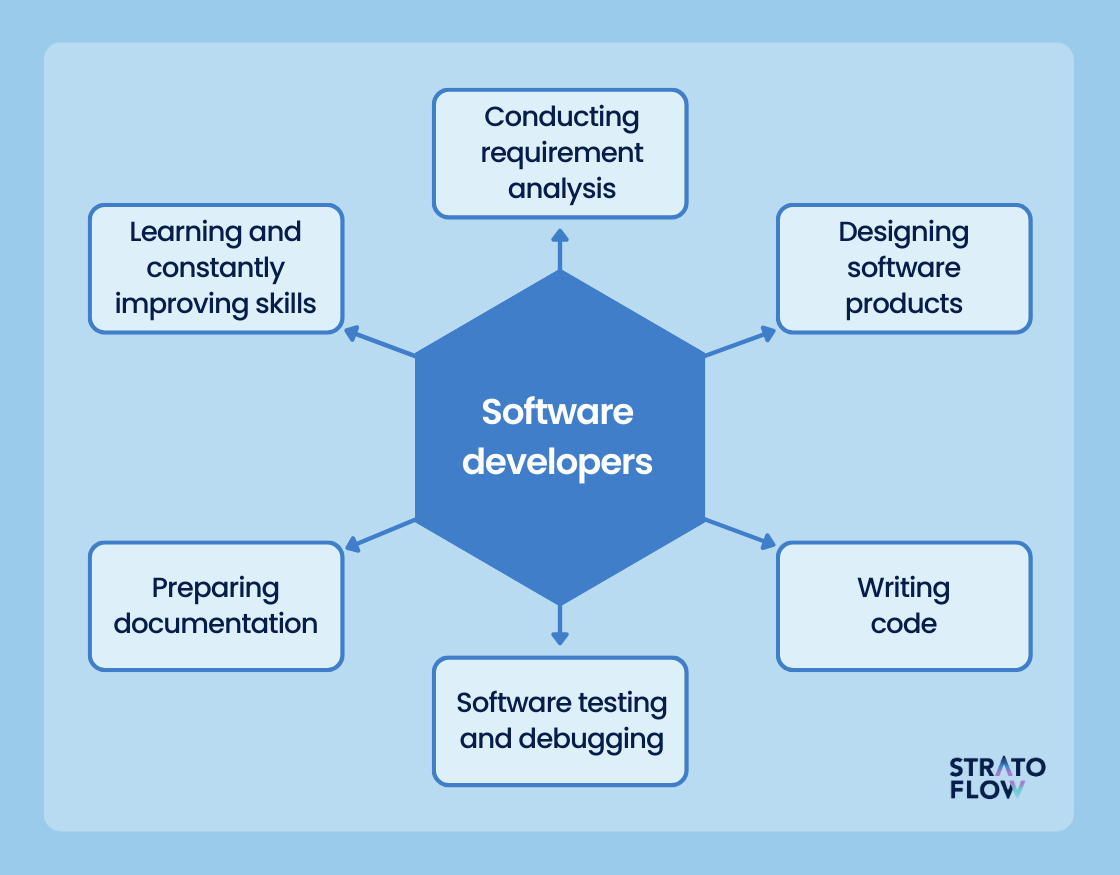Hire Dedicated Developers for Your Following Big Project with Confidence
Hire Dedicated Developers for Your Following Big Project with Confidence
Blog Article
Dedicated Developers vs. In-House Teams: Which Is Right for You?
The decision between making use of devoted developers and preserving an in-house group is a considerable one that can impact the trajectory of your jobs and overall organization method. On the other hand, internal groups contribute to a cohesive business culture and a nuanced understanding of lasting objectives.
Understanding Committed Developers
The expanding need for specialized skills in the technology sector has led to the development of dedicated designers as a practical service for numerous organizations. These experts are normally gotten on a task basis, enabling firms to take advantage of details competence without the lasting dedication connected with full time hires. Devoted developers are commonly ingrained within a client's team, offering versatility and scalability to satisfy project requirements.
This design enables organizations to access an international ability swimming pool, which is especially advantageous in a rapidly evolving technical landscape. Committed designers can be sourced from numerous geographical locations, making certain that firms can discover the right ability at competitive prices. They typically bring a wealth of experience and knowledge, having actually worked on diverse jobs across various markets.
Furthermore, devoted designers can focus specifically on the jobs available, boosting performance and performance. They are furnished to incorporate perfectly right into existing workflows, teaming up very closely with in-house groups to attain task goals. This method not just reduces the concern of recruitment and training but additionally permits organizations to remain active, adapting promptly to altering market demands and technical improvements.
Benefits of In-House Teams

Furthermore, internal teams have a tendency to have a deeper understanding of the business's goal, worths, and objectives. This placement can boost employee interaction and motivation, as team members really feel a lot more linked to their job and the organization's success. Additionally, having a devoted in-house team enables far better positioning of approaches and purposes, as these participants are consistently concentrated on the firm's concerns.
Internal teams likewise help with quicker decision-making procedures, as they can react extra quickly to challenges and changes. The recognized relationships and familiarity with firm procedures permit streamlined workflows and decreased miscommunication. Inevitably, the combination of a natural society, positioning with business goals, and reliable interaction makes internal groups an important possession for many organizations, specifically those aiming to grow lasting development and advancement.
Cost Factors To Consider
When evaluating price considerations, both committed programmers and in-house teams existing unique economic ramifications for organizations. Involving devoted designers commonly includes a pay-per-project or hourly rate model, which can be affordable for organizations with fluctuating project demands. This approach permits versatility in scaling sources up or down, guaranteeing that business just spend for the solutions they need.
On the other hand, in-house teams require dealt with prices, consisting of incomes, benefits, and overhead expenses such as office and equipment. While this model uses greater control and prompt accessibility of resources, it may lead to greater long-term expenditures, specifically if the workload does not validate a permanent staff.
Moreover, firms must consider the surprise expenses related to recruitment and training of internal staff members, which can better strain budget plans. In many cases, the moment and sources invested on managing an in-house group can interfere with the company's core business goals.

Task Monitoring and Versatility
Task management and versatility are important aspects that affect the option between internal groups and dedicated designers. Dedicated designers normally offer a high level of versatility, enabling organizations to range resources up or down based on job demands. This dexterity can be particularly advantageous for organizations experiencing rising and fall work or those seeking to introduce rapidly. Committed groups usually have actually established procedures for taking care of jobs successfully, leveraging specific techniques like Agile or Scrum, which help with iterative progression and flexibility.

Ultimately, the choice in between specialized developers and in-house teams pivots on the preferred level of flexibility and the particular task administration needs. Business need to examine their operational dynamics, task intricacy, and resource schedule to identify which alternative straightens finest with their tactical purposes.
Making the Right Choice
Selecting the appropriate advancement approach-- in-house groups or devoted designers-- calls for a mindful analysis of various variables that align with a business's critical objectives. software development staff augmentation. Take into consideration the nature of the job. Committed designers may be much more ideal if it demands specialized abilities or a quick scale-up. Alternatively, in-house teams can give better continuity and integration with existing employees.
Next, evaluate your spending plan. Committed developers frequently present an affordable remedy for short-term projects, while in-house groups might incur higher long-lasting costs due to incomes, benefits, and overhead costs. Examine the level of control and partnership preferred; internal groups usually promote stronger communication and alignment with firm society.
If immediate results are required, devoted designers can be onboarded quickly, whereas building an in-house group takes time for employment and training. If constant growth is essential, spending in an internal group may generate far better returns over time.
Conclusion
Finally, the decision between dedicated designers and internal groups depends upon task needs and organizational goals. Dedicated developers offer adaptability and specific competence, making go to these guys them appropriate for temporary initiatives. On the other hand, in-house teams grow a natural culture and deeper positioning with long-lasting objectives. Cautious analysis of spending plan restrictions, project timelines, and desired control degrees is important for determining the most suitable approach, guaranteeing alignment with critical concerns and operational effectiveness.
The decision in between utilizing devoted developers and keeping an internal group is a substantial one that can affect the trajectory of your jobs and total business technique.Task monitoring and versatility are crucial elements that affect the option between dedicated designers and in-house groups. dedicated development team.In comparison, in-house groups may stand out in preserving a regular task management framework due to their knowledge with the organization's society and long-term goals. Committed designers Learn More typically provide an economical option for temporary tasks, while in-house teams might incur higher long-term expenditures due to wages, benefits, and expenses expenses.In final thought, the choice between specialized developers and in-house teams hinges on task needs and business purposes
Report this page